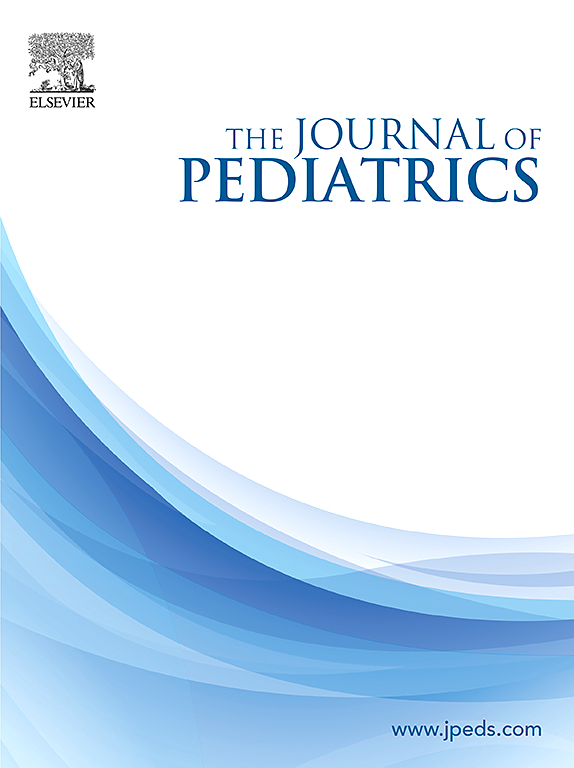邻里社会经济剥夺与儿童乳糜泻血清学正常化率降低有关。
IF 3.5
2区 医学
Q1 PEDIATRICS
引用次数: 0
摘要
目的:描述社区社会经济剥夺如何影响组织转谷氨酰胺酶(tTG) IgA正常化,这是有效消除谷蛋白的标志。研究设计:我们进行了一项单中心、回顾性队列研究,纳入了2013-2023年间诊断为血清学或活检基础乳糜泻的207名≤18岁儿童。主要暴露是邻里剥夺指数,这是一种连续测量(0-1),源自2018年的五年美国社区调查。我们按四分位数(Q)将儿童从最低到最高的贫困程度分类:Q1(0.29)。主要结果是tTG - IgA在血清阳性后60个月内的正常化。我们使用Cox回归模型来估计tTG IgA标准化的风险比,并在多变量分析中调整种族、民族、母语和保险类型。结果:207例患儿中位剥夺指数为0.22 (IQR: 0.14, 0.29)。与黑人或其他种族、西班牙裔、非英语母语和拥有公共保险的参与者相关的剥夺程度较高。在单变量分析中,邻里剥夺最高四分位数的儿童正常化率比最低四分位数的儿童低50% (HR 0.50;95%ci 0.27, 0.92;p = 0.03)。在多变量分析中,在调整了种族、民族、母语和保险类型后,邻里剥夺最高四分位数的儿童的正常化率降低了67% (HR 0.33;95%ci 0.15, 0.75;p = 0.008)。结论:生活在社会经济贫困社区的儿童可能饮食依从性不足。解决贫困社区消除谷蛋白的障碍可能会改善结果。本文章由计算机程序翻译,如有差异,请以英文原文为准。
Neighborhood Socioeconomic Deprivation Associates with Decreased Serologic Normalization Rates in Pediatric Celiac Disease
Objective
To characterize how neighborhood socioeconomic deprivation affects tissue transglutaminase (tTG) IgA normalization, a marker of effective gluten elimination.
Study design
We conducted a single-center, retrospective cohort study of 207 children ≤18 years old with serology- or biopsy-based celiac disease diagnosed between 2013 and 2023. The primary exposure was the neighborhood deprivation index, a continuous measure (0-1) derived from the 2018 5-year American Community Survey. We categorized children from lowest to highest deprivation by quartiles (Q): Q1 (<0.15), Q2 (0.15-0.21), Q3 (0.21-0.29), or Q4 (>0.29). The primary outcome was tTG IgA normalization over the 60 months after seropositivity. We used Cox regression models to estimate hazard ratios (HRs) for tTG IgA normalization, adjusting for race, ethnicity, primary-spoken language, and insurance type in multivariable analyses.
Results
Of 207 children, the median deprivation index was 0.22 (IQR: 0.14, 0.29). Higher deprivation was associated with participants identifying as Black or Other race, Hispanic, non-English primary-speaking, and having public insurance. In univariate analysis, children in the highest quartile of neighborhood deprivation had a 50% lower normalization rate compared with those in the lowest quartile (HR 0.50; 95% confidence interval 0.27, 0.92; P = .03). In multivariable analysis, children in the highest quartile of neighborhood deprivation sustained a 67% lower normalization rate after adjusting for race, ethnicity, primary-spoken language, and insurance type (HR0.33; 95% confidence interval 0.15, 0.75; P = .008).
Conclusions
Children living in socioeconomically deprived neighborhoods may have inadequate dietary adherence. Addressing the barriers to gluten elimination in deprived neighborhoods may improve outcomes.
求助全文
通过发布文献求助,成功后即可免费获取论文全文。
去求助
来源期刊

Journal of Pediatrics
医学-小儿科
CiteScore
6.00
自引率
2.00%
发文量
696
审稿时长
31 days
期刊介绍:
The Journal of Pediatrics is an international peer-reviewed journal that advances pediatric research and serves as a practical guide for pediatricians who manage health and diagnose and treat disorders in infants, children, and adolescents. The Journal publishes original work based on standards of excellence and expert review. The Journal seeks to publish high quality original articles that are immediately applicable to practice (basic science, translational research, evidence-based medicine), brief clinical and laboratory case reports, medical progress, expert commentary, grand rounds, insightful editorials, “classic” physical examinations, and novel insights into clinical and academic pediatric medicine related to every aspect of child health. Published monthly since 1932, The Journal of Pediatrics continues to promote the latest developments in pediatric medicine, child health, policy, and advocacy.
Topics covered in The Journal of Pediatrics include, but are not limited to:
General Pediatrics
Pediatric Subspecialties
Adolescent Medicine
Allergy and Immunology
Cardiology
Critical Care Medicine
Developmental-Behavioral Medicine
Endocrinology
Gastroenterology
Hematology-Oncology
Infectious Diseases
Neonatal-Perinatal Medicine
Nephrology
Neurology
Emergency Medicine
Pulmonology
Rheumatology
Genetics
Ethics
Health Service Research
Pediatric Hospitalist Medicine.
 求助内容:
求助内容: 应助结果提醒方式:
应助结果提醒方式:


